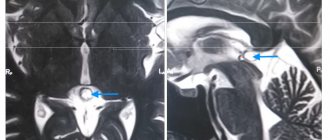In psychology, negativism means a person’s resistance to any external influence, devoid of rational premises, even contrary to his own well-being.
In a more general sense, this concept denotes a generally negative perception of the world around us, the desire to do everything contrary to requests and expectations.
In pedagogy, the term “negativism” is applied to children who are characterized by an oppositional manner of behavior with people who should be an authority for them (teachers, parents).
Active and passive form of resistance
It is customary to distinguish two main forms of negativism: active and passive.
Passive negativism is expressed in absolute ignorance of demands and requests. In the active form, a person shows aggression and sharply resists any attempts to influence him. As one of the subtypes of active negativism, we can distinguish paradoxical, when a person does everything intentionally the opposite, even if it is at odds with his real desires.
Separately, there are purely physiological manifestations of this condition, when a person refuses to eat, practically does not move, and does not speak.
Related concepts
Negativism is one of the trio of manifestations of a child’s complex of protest behavior.
The second component is stubbornness, which can be considered a form of negativism, with the only amendment that stubbornness in any matter has its own specific reasons, while negativism is resistance that is not motivated by anything. What unites these phenomena is that both arise on the basis of purely subjective human sensations.
One of the closest phenomena to negativism (as a psychiatric term) is mutism. This is a condition in which a person avoids all communication, both through speech and gestures. But, unlike negativism, mutism is mainly the result of a strong shock.
The third component is obstinacy, the difference from stubbornness is that it is not directed at a specific person, but in general at the educational system, the development of events, and so on.
Conclusions. Expert advice
Children with motor alalia have a chance for a normal life if their parents did not let everything take its course. The disease can be identified at the age of 3 years, when the problem is completely correctable. First of all, it is necessary to make a diagnosis and confirm it with several doctors. So, an audiologist should give his opinion, because alalia is in many ways similar to ordinary deafness.
Treatment of the disease must be comprehensive. During diagnosis, its cause is determined and a course is prescribed. Afterwards, the child must be given medications, attend a physiotherapy room, classes on general manual motor skills, etc. Stimulating speech activity with a speech therapist plays a significant role.
Remember that the prognosis for alalia, although it depends on the degree of brain damage, is determined by proper treatment. Timely identification of the problem and the use of all available methods of therapy can often completely eliminate motor alalia and significantly reduce the impact of sensory alalia on the child’s life.
Complex of reasons and factors
As a psychiatric diagnosis, negativism is most often observed with the development of catatonic syndrome (schizophrenia, agitation and stupor), autism, dementia (including senile) and some types of depression.
When negativism is meant in a broader context, then among the reasons for its occurrence, it is customary to primarily name frustration caused by long-term and very strong dissatisfaction with life circumstances and the environment surrounding a person. In turn, this frustration creates severe psychological discomfort, to compensate for which the person resorts to negativistic behavior.
Another possible reason for resistance may be difficulties with communication in a person. In this case, such a state arises as a hypercompensatory reaction to one’s own communication problems.
In the form of violent stubbornness, negativism arises as a response to attempts at external influence that are at odds with the person’s personal needs and desires. This reaction is due to a person’s need for his own opinion, self-expression, and control over his own life.
Relationship with age
Age-related crises that characterize the transition from one life period to another are often accompanied by changes in character and thinking, and frequent mood swings.
At this time, a person becomes conflicted and even aggressive to a certain extent, and a pessimistic view of the world around him prevails. Negativism is almost always a symptom of such a crisis, which manifests itself in stressful situations, when a person is most vulnerable and defenseless.
Critical ages
Throughout life, a person experiences several age-related crises, most of which occur before the age of 20:
- newborn crisis;
- crisis of the 1st year of life;
- crisis 3 years;
- crisis 6-7 years (“school crisis”);
- adolescence crisis (from about 12 to 17 years).
In adult life, a person faces only two critical periods associated with the transition from one age to another:
- middle age crisis;
- stress associated with retirement.
Pathological resistance in children 3 years old
Naturally, negativism is not characteristic of the first two periods, but already at the age of three, when children begin to show a desire for independence, parents are faced with the first manifestations of children's stubbornness and categoricalness.
That is why this period is often called “I myself,” since this name best describes the state of a child at three years old. The child wants to perform most of the actions on his own, but his desires do not coincide with his capabilities, which leads to frustration, which, as mentioned above, is one of the main causes of this condition.
At the same time, one should not confuse negativism with simple disobedience of a child. When a baby refuses to do something he doesn't want, that's normal. Negativism manifests itself in situations when a child refuses to perform some action precisely when adults have suggested it to him.
Preventive methods
Conformism and non-conformism are a kind of balance in the human model of behavior. The predominance of one aspect of this phenomenon can negatively affect the perception of the world around us. In order to prevent this mental disorder in loved ones, you should provide them with support and attention. Most often, people entering a crisis age need such support.
When carrying out prevention in children, it is important to teach them how to adapt correctly to society. Elderly people should pay special attention, since often upon reaching old age, a person loses communication ties with others. Remember that it is very important to prevent the development of frustration in a timely manner, since this condition is the main root cause of the development of negativism.
View from the outside
If we talk about a psychiatric term, then in this case negativism itself acts as a symptom of a certain number of diseases. Moreover, depending on the form (active or passive), it can manifest itself both in demonstrative insubordination and in passive resistance to any requests of the doctor, which is its most important feature in this case.
As for negativism from a pedagogical or general psychological point of view, the main external manifestations in this case will be speech and behavioral signs:
- difficulties with communication, interaction with others, even the closest people;
- conflict;
- refusal to compromise;
- skepticism and mistrust bordering on paranoia.
In the case of adults, negativism and nihilism should not be confused. Nihilism is a worldview position, and, despite the fact that its external manifestations are similar to those of negativism, it is a conscious choice of a person, while people with pathological stubbornness behave this way unconsciously.
Features of negativism in adults
Some adults, despite the acquired life experience, do not cease to be negativists. Due to deep personal problems, they say “no” to the whole world, demonstrating their stubbornness and pessimistic attitude.
According to psychologists, negativism in an adult worsens during periods of failure. These could be problems at work or in the family. A negative attitude manifests itself in behavior, communication style, and outlook on life. It seems to a person that everyone around him is suppressing his individuality. Such a person literally tries to do everything “not like others.” [4]
It is difficult to have a constructive dialogue with convinced negativists. Over time, the inner circle tries to minimize communication with the pessimist. Left without friends, a person tries to find a common language with like-minded people who are also negativists. Naturally, this only complicates the situation.
How does it feel from the inside
The feelings of the person himself are quite difficult to describe, primarily because such people rarely recognize their condition as abnormal.
The internal state will be characterized by an extreme degree of confusion in one’s own desires and needs, conflicts with oneself, and sometimes self-aggression.
The passive form in this case can be felt as inhibition of consciousness, an extreme degree of indifference towards all surrounding things and people.
What to do if this affects your family?
If it seems to you that one of your loved ones has signs of negativism in behavior, then, first of all, you should contact a psychologist or psychotherapist to resolve the internal problems that caused this condition, since such pathological stubbornness in itself is only a consequence , therefore, in order to overcome it, it is necessary to work with the root cause.
Among the methods of psychotherapy, play therapy, art therapy, fairy tale therapy, etc. are most suitable for preschoolers and primary schoolchildren.
For negative adolescents and adults, cognitive behavioral therapy has proven itself to be the best treatment. It is also important not to forget about your own attitude towards your loved ones. Psychotherapy will be most successful only if you work on this problem as a team.
In order to correct negativistic behavior and, if possible, avoid any conflicts, it is necessary to be creative. This is especially true for children.
It is necessary to exclude any psychological pressure on the child; in no case should there be threats or physical punishment - this will only aggravate the situation. You will have to use so-called “soft power” - negotiate, adapt, make compromises.
It is advisable to generally avoid situations in which conflict may arise.
Your main goal is to ensure that your child begins to follow positive patterns of communication and interaction with others. Don't forget to praise him every time he does something good, makes concessions, helps you, or communicates calmly with other people. In overcoming negativism, the mechanism of positive reinforcement plays a crucial role.
Signs
A person can independently determine the presence of this condition by the presence of the following symptoms:
- thoughts about the imperfection of the world;
- tendency to worry;
- hostile attitude towards people with a positive worldview;
- ingratitude;
- the habit of living through a problem instead of looking for a way to solve it;
- motivation through negative information;
- focusing on the negative.
Research by psychologists has made it possible to establish several factors on which negative motivation is based, among them:
- fear of running into trouble;
- guilt;
- fear of losing what you have;
- dissatisfaction with your results;
- lack of personal life;
- the desire to prove something to others.
When communicating with a person who shows signs of this condition, you should be careful and not openly point out to them the presence of this pathology, as they may display a defensive reaction, which will further strengthen their negative perception.
At the same time, each person is able to independently analyze his condition and not allow himself to “fall into negativism.”










